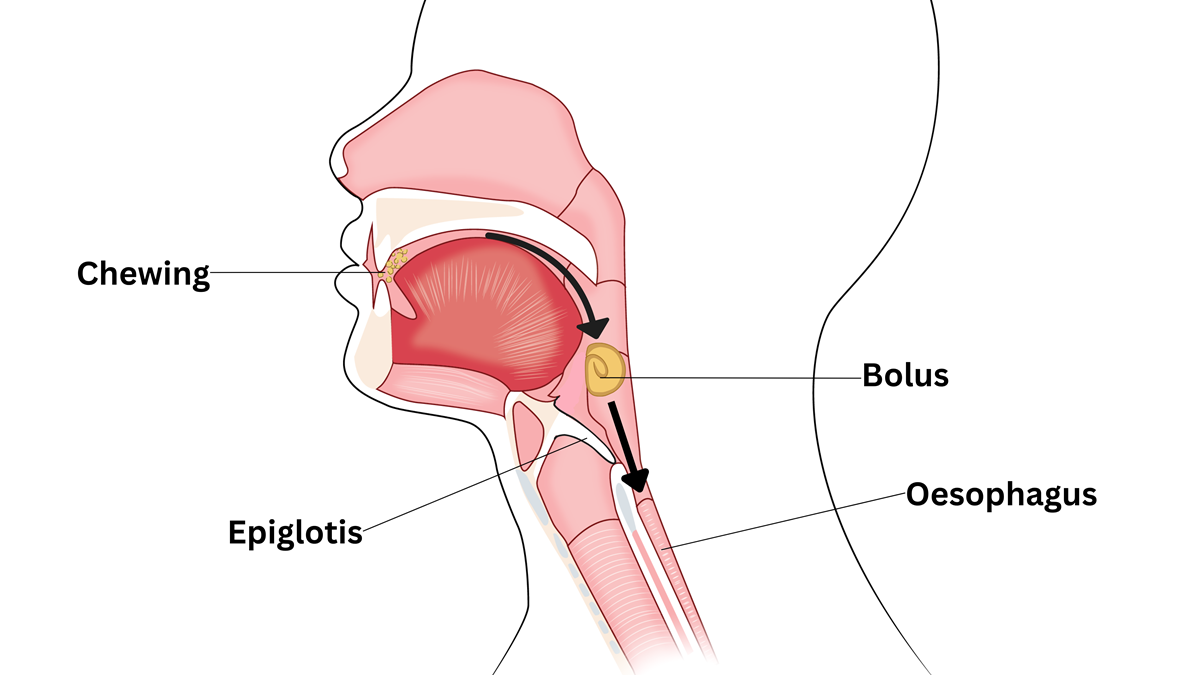How we swallow
Eating, chewing and swallowing can all be affected by the treatment needed for salivary gland cancers.
Surgery can remove bone, teeth, muscle and nerves in the mouth and throat that are important in the swallowing process. Removal of the salivary glands through surgery (or damage through radiotherapy) can also stop the glands from producing the saliva needed to help chew and swallow.
We all swallow on average between 500 and 700 times a day. But how does the process actually work?
1. You chew
Chewing breaks down the food in your mouth to make it easier to swallow. Saliva moistens the food, which your tongue moves around the mouth, so the teeth can break it into a soft, moist ball called a bolus.
2. Swallowing begins in the mouth
The tip of the tongue presses against the roof of the mouth, which moves the food bolus to the back of the throat – or pharynx. It’s important that swallowing doesn’t interfere with one of the other main functions of the throat – breathing. So at this stage, the flexible muscle of the soft palate at the back of the mouth moves up to block the gap between the mouth and the nose, to stop food from going up the nose.
3. Food moves into the throat
The muscles at the base of the tongue and throat squeeze together to help move the food bolus downwards. The food needs to go down your oesophagus – the tube that takes the food to your stomach. But this is directly behind your open windpipe - or trachea - which takes air to your lungs. To prevent choking, or food getting into your lungs, your larynx (or voice box) rises up when you swallow, forcing the elastic cartilage of the epiglottis to close over the opening of the windpipe.
4. The oesophagus (gullet) opens safely
Muscles in the oesophagus then begin a series of contractions to push the food down into the stomach.

 Image credit: Hammad K
Image credit: Hammad K